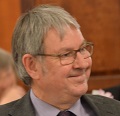2019 ART Conference
The ART Annual Conference was as always an inspiring and enjoyable weekend, with leading speakers sharing best practice from their ringing as well as ideas from other activities and professions. Continuing last year's successful partnership with the CCCBR the second day of the conference was organised by the newly formed Volunteer and Leadership Workgroup and focussed on youth development and leadership.
ART Conference 2019 speakers & presentations
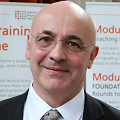
Mark Regan
Ringing in Worcester – The Future
Mark Regan is the Ringing Master at Worcester Cathedral and a member of the Worcester DAC. He has rung 2400-(ish) peals, over 200 peals on bells over 40cwt and over 1000 peals on 12 bells.
Since living in Worcester he has installed two new rings of bells in the city; and has opened up several 'unringables' in the Diocese, the most noteworthy being Bredon, Bengeworth and Severn Stoke. For many years he was the Steeplekeeper and Churchwarden at St Mary le Bow in Cheapside. When living in Leighton Buzzard he restored the bells twice, the second time was after a fire severely damaged the church in 1985. Mark's latest project is to install a ring of bells in a new arts building at Christopher Whitehead Language College in Worcester.
He passionately believes that the future of bell ringing has as much to do with establishing better relationships with the Church of England and the community, as it has to do with teaching new bell ringers.
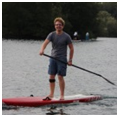
Matt Bulbeck
Why I refuse to be called an 'Instructor': the differences between instructing, teaching and coaching
My name is Matt Bulbeck and I am a 20 year old professional outdoor sports coach, specialising in Stand Up Paddleboard Racing and in Windsurfing.
I have completed my ART Module 1 accreditation, having first started ringing in 2012 after being encouraged to give it a go by my mother. I found out that I really enjoy ringing, pushing forwards as a ringer and training with the regional youth team for about a year before dropping out due to work commitments. I started teaching ringing by assisting the instructor at our local tower, bringing my coaching experience from work and other ventures into it. This allowed me to use a number of different techniques that I have developed during my six years working in the outdoor industry. I try and encourage a constant flow of self-assessment from the client rather than a monologue all coming from me, which is widely regarded as being the ultimate goal of coaching; you being able to step back and allow them to correct themselves, with you guiding them.
|
Simon RuddThe Mancroft Ringing Discovery CentreSimon learned to ring in 1967 at Great Bromley in Essex and became Tower Captain at the age of 16. He has lived in East Anglia for the intervening 50 years, gradually migrating back to Norfolk via Suffolk, reversing the southward journey his family had made in the Victorian era. Simon has served as Ringing Master at both St Mary-le-Tower in Ipswich and at St Peter Mancroft in Norwich which is his current home tower, although he remains an Ipswich Town supporter in a Norwich City world! Simon wrote the initial paper describing the scope of the Mancroft Appeal 300 project and served as the project’s Chairman from 2012.
|

Ian and Louise Wilson
Leadership – Managing and Motivating the Team
Ian has fifteen years of working in Higher Education, lecturing subjects such as Human Resource Management, Project Management and Engineering Business Management teaching a range of diverse students at various levels. Ian brings his knowledge and experience gained working within the manufacturing industry where he was a successful manager leading teams of engineers and operational workers. Ian began bell ringing at a late stage of life when his wife set him one of fifty challenges to learn how to ring bells. This was for his 50th birthday. Ian is currently on a journey to becoming ‘useful’ in his local tower! Within the two years of ringing Ian has rung in over forty different towers around the country and two internationally observing different teaching and learning methods.
Louise spent twenty years working in the Financial Services Industry leading departments and developing teams before moving to teaching in Higher Education. Since becoming an academic in 2007, Louise has written, developed and led a variety of Programmes designed for business professionals and academic staff. Those at the start of their careers. People who are responsible for developing adults and creating learning experiences that are practically-based and learner-centred. Louise’s teaching interests originate from this background and as an educational researcher this informed her PhD study. Specifically, understanding the experience of transition as newcomers learn and journey from professional occupations through to academic practitioners. Louise discovered her passion for bell ringing in March 2016 and having caught the bug for a wonderfully challenging activity finds herself appreciating the art from the perspective of being a newcomer to the ringing world later in life.

Jennie Higson and Giles Willson
Marketing or teaching? Behind the scenes of Adult Education
Jennie has been ringing for over 30 years and is a third generation ringer. She isn’t sure how many peals she has rung, but the majority have been on 12 or more bells. Jennie has completed ART Modules 1 and 2 and is a mentor, workshop leader and the leader of the Northampton Ringing Hub. Jennie enjoys teaching ringing and is keen to develop this in Northampton and further afield by engaging people through adult education as well as through school groups.

Simon Linford and Clare McArdle
LtR Plus and Pickled Eggs
Simon Linford is active at most points on the ringing spectrum. A typical week could see him helping at the Birmingham School of Bell Ringing, ringing a peal of spliced at Birmingham Cathedral, going to a Guild practice, and teaching his daughter and other children at Brumdingers.
Simon has rung some stupidly complicated peals, most recently the record peal of 20,000 all the work Spliced Maximus in 38 methods. He does however love teaching at all levels, with a passion for helping people do things they didn't think they would be able to do.
Most recently Simon has been behind the 'Project Pickled Egg' initiative, which aims to develop properly a new set of Core Surprise Major methods to replace the Standard 8, with the degree of thought, consultation and follow-up resource that could have traction, and change the way we learn and progress in Surprise Major.
Clare learned to ring in the 1970s at Harborne in Birmingham, where she still rings and she is one of the co-founders of the Birmingham School of Bell Ringing.
She has had a particular interest in training and development of new ringers for the last twenty years or so. She first got involved with ART in 2011 when one of the ringers she had taught asked her if she would accompany and mentor her through Module 1 of the teacher training scheme. She has mentored several teachers through both ART Modules and became an ART Assessor in 2015 and an ART Tutor in 2017.
For her, the Learning the Ropes scheme has proved a great tool to give new ringers a well thought out and positive experience of learning to ring. New ringers are a little bit like new chicks – they think of the first person they see as their “mother” and will be dependent on them for everything to do with their ringing progress. They will be asking your advice for a long time. The Learning the Ropes Plus follow-on scheme helps them to fledge as independent ringers. It helps them to make wise choices about what to try next and gives them sensible goals to work towards.
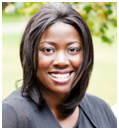
Andrea Watkins
Volunteers, Safeguarding and the CofE
Andrea has over 11 years of experience as a qualified Social Worker having worked in local authority settings as a practitioner and manager. She then worked in policy and performance for a Children’s Safeguarding Board and subsequently took up a post with the British Council as Regional Child Protection Manager supporting the safeguarding arrangements for the regions of the Middle East and Sub-Saharan Africa in addition to the strategic business units within the organization.
Andrea is currently interim National Training and Development Manager for the Church of England National Safeguarding Team. She brings a range of skills and experiences in management, training, policy development, capacity building, quality assurance and multi-agency collaboration at a local, regional, and international level.
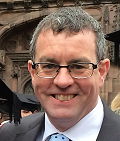
Marcus Booth
Insurance and Bell Ringing: What you need to know
Marcus has worked in the insurance industry for 32 years, starting with the Phoenix in Bristol, morphing into Sun Alliance, Royal and Sun Alliance and RSA, before joining Ecclesiastical Insurance in 2005.
He started as a Property Pricing Analyst, specialising in Church and Heritage before becoming Underwriting Manager at Ansvar in Eastbourne for 2 years, then Schemes Underwriting Manager and since 2012 he has held the role of Church Underwriting Manager.
Whilst it’s not a pre-requisite to be a ringer in this job, Marcus considers it certainly helps! He and colleagues meet with the CCCBR for annual liaison meetings and generally deal with ringing queries from customers. Marcus is responsible for a number of the bell-ringing articles and guidance on the Ecclesiastical website. He is a Fellow of the Chartered Insurance Institute and a Chartered Insurer.

Roger Booth, Matt Lawrence and Don McLean
Regional networks - revitalising ringing
Roger Booth. Taught to ring in Gloucestershire, and now living and ringing in Hampshire after spending 40 years in London, in his ringing career Roger has held various posts within local Associations and served on various Central Council Committees and working parties. Having been involved in restoring several rings, Roger turned his attention to issues of recruitment and training, to help ensure there are adequate numbers of ringers to ring these restored bells. Roger is also the owner of the Charmborough Ring and particularly interested in ensuring that systems are in place to adequately follow up new ringers, and maximise retention.
Matt Lawrence. I am the ART Regional Development Officer covering Shropshire. I started ringing in Walsall as a teenager in the mid 1980’s when a school friend persuaded me to have a go and has been ringing ever since. Although I have been ringing for over 30 years it is only since moving to Lilleshall 5 years ago that (out of necessity) I started to teach people to ring. I have found ART incredibly useful in my development as a teacher and volunteered to be a Regional Development Officer to help support the recruitment and training of new recruits in the local area.
Don McLean. I started ringing in 1966 in Carrickfergus and except for a 5 year gap in the “Noughties” have been ringing ever since. I am currently on my third period over the years of being Northern Ireland Ringing Master. I’ve also been Irish Association Ringing Master and Association President for 5 year periods. From about the age of 17 I’ve been teaching people to ring and when I returned to ringing I was delighted to learn of the creation of ART and embraced the concepts of ART teaching which were very close to my own. I volunteered to become ART Development Officer for Northern Ireland to teach both new recruits to ringing and also importantly new teachers to the ART standard to ensure the survival and growth of ringing in Northern Ireland.
CCCBR V&L Workgroup Day
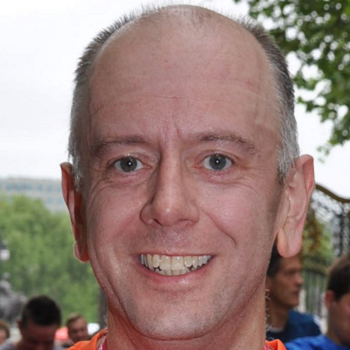
David Hull
A Vision for the Future of Youth Ringing
David Hull learnt to ring aged 6 in Essex, taught by his father George. A move to Birmingham to attend University afforded him the opportunity to become involved with the St Martin's Guild, developing his 12-bell ringing under the tutelage of Rod Pipe and having spells as Tower Captain at Birmingham Cathedral and Ringing Master of the Guild. David left Birmingham for York in 1995, where he is now a member of the York Minster band and Tower Captain at St Wilfrid's.
He has been co-leader of the Yorkshire Tykes youth band (of which children Ewan and Eliza are both members) for the past five years, and is now the organiser of the Ringing World National Youth Contest.
David enjoys all aspects of ringing, including teaching and developing new ringers, ringing and composing peals and quarters, and promoting ringing within the community. He believes it is vital that the exercise builds on the momentum generated by the RWNYC to further engage with young ringers and ensure a firm footing for the future of change ringing.

Fiona Joines
Putting Girls in the Lead: How Girlguiding Does it
Fiona Joines has been a member of Girlguiding for over 30 years, having joined as a Brownie. She currently holds local, regional and national roles including leading the rollout of the safeguarding training across Girlguiding Anglia and mentoring new and young leaders, to gain the associations Leadership Qualification.
As a trainer for both Girlguiding and in her own business Fiona is passionate about passing on skills to the younger generations and ensuring they have opportunities to practice these skills in a range of arenas.
Fiona lives in Oxford, UK with her partner. In her free time, she plays clarinet in a wind band and shares the conducting with the musical director!
You can follow Fiona on Facebook here

Christopher O’Mahony
Successful leaders and the Duke of Edinburgh Scheme
Christopher learned to ring in Sydney, commencing in 1977, aged 14. Since then, he has rung all over Australia and New Zealand, as well as England, Scotland, Wales, Ireland, North America and Belgium. He started calling quarter peals in his teens, rang his first peal at 19, and has rung a few hundred since. He served as tower captain at St Mary’s Cathedral in Sydney, and is currently ringing master of a thriving team at St Mary’s Harrow on the Hill. The Duke of Edinburgh bellringing scheme at Harrow has had many successes, with young ringers moving on to positions of responsibility in universities and local Associations.
Christopher has also held positions as branch ringing master in NSW and Rutland (not at the same time), and was President of ANZAB in the 1990’s. He became a CCCBR representative in 2007, serving predominantly on the Tower Stewardship Committee. He was elected Vice-President of the Council in 2014, and President in 2017. A major focus of his tenure as President is to encourage renewal and reform across all of CCCBR’s services for ringing, including increased youth leadership and engagement.
When not ringing, Christopher is currently Director of ICT at Harrow School. He has been a practitioner and researcher in the field of school information systems since 1992, with previous ICT management positions in Bath, Uppingham and Sydney. His doctoral thesis concerned the evolution and evaluation of information systems in Australian schools throughout the 1990s. His post-doctoral research has included studies of ICT staff competence, organisational culture, ICT strategy, virtual learning environments and more.
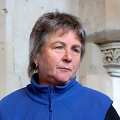
Pip Penney
Parental Involvement: What can we Learn from other Activities
Pip started ringing at the age of 47 as part of the Ring in the Millennium project and was not impressed with her early learning experiences! Her profession was physiotherapist, working in rehabilitation. She decided to bring her knowledge of teaching physical skills from the world of patient treatment to the teaching of bell handling.
In 2002 she became a member of the Central Council Education Committee and began developing the Ringing Practice Toolkit on- line teaching resource. She also started teaching young ringers putting her ideas into practise. Pip then started a group with other young ringers - January 2004 saw the inaugural meeting of Kids.Ring.Out.[KRO] This group communicated by e-mail, a newish idea within ringing at the time! KRO organised tours, outings and courses. The young ringers progressed well and in 2006 K.R.O. won the Founders Prize for the Encouragement of Young Ringers.
As the young ringers from KRO matured some of them approached Pip, asking her to teach them to teach bell handling. It was this experience which made her realise that new teachers would need mentoring until such time that they became competent and confident. This idea was later incorporated into the Integrated Teacher Training Scheme [ITTS] that Pip then developed: the first pilot course held October 2009
Over the next few years the new teaching scheme grew The Association of Ringing Teachers [ART] as a professional body for those ringing teachers who were ITTS trained and accredited was established. Pip became the first Chairman of ART in 2012.
Since stepping down as Chairman of ART in 2016 Pip has published two books A Ringers’ Guide to Learning the Ropes and A Teachers’ Guide to Learning the Ropes. She has also worked with others on the development of a series of workshops which can be presented nationwide by ART workshop leaders.

David Smith
Different ages, different approaches
David has spent his entire working life involved in education, teaching in various schools in UK and Australia, finally as Melbourne Grammar School's first Director of Computing in the early and mid 1980s.Since then he has set up various companies involved with computers in education, and has worked in Papua New Guinea assisting their push to improve their secondary education system.He is a prolific software writer, having designed and published over a hundred educational software packages used around the English-speaking world.
On the ringing front, he resumed ringing in 2006 after a very lengthy gap.He recently completed a three-year term as the President of ANZAB.He is an ART tutor, became a Central Council representative in 2016 and joined the then Education Committee, and was a member of the CRAG team.He writes 'The Education Column' series in The Ringing World.He was elected to the newly-formed Central Council Executive in 2018, and is the Executive Sponsor of the Volunteer and Leadership Workgroup.
